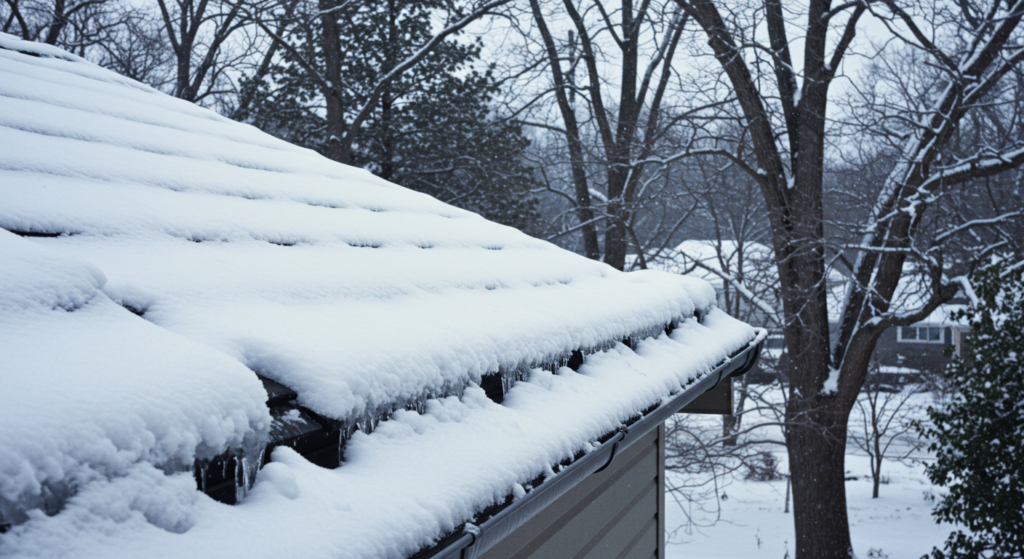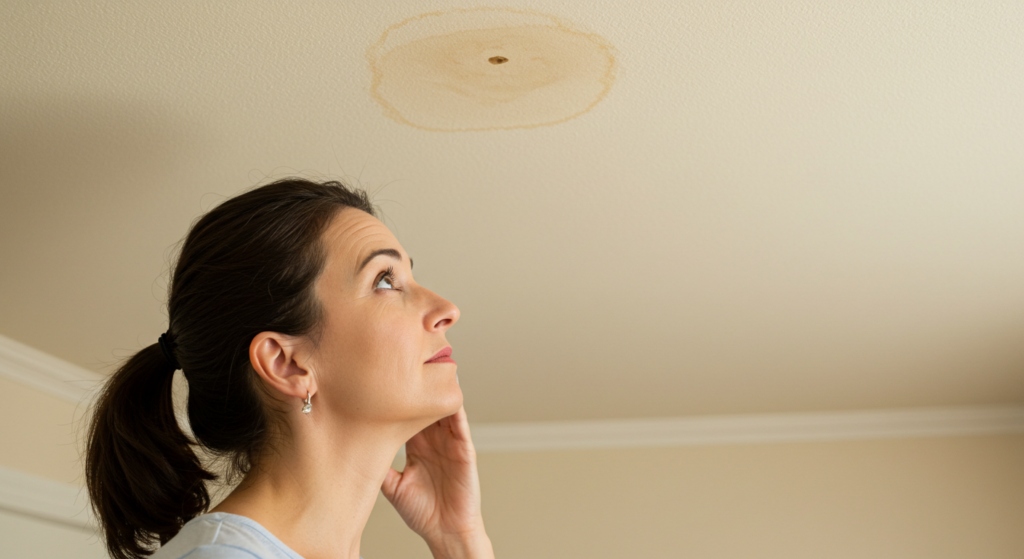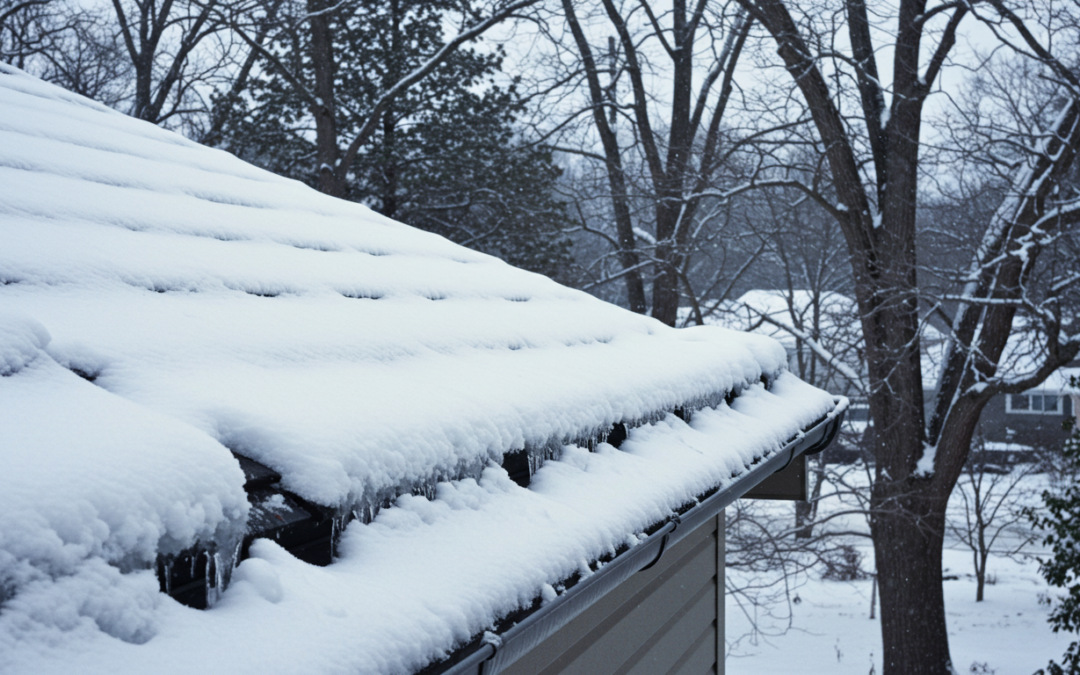Winter has blanketed Fort Worth in snow and ice; homeowners face a hidden threat looming above: roof damage. Have you noticed a roof leak or other issue? The chill of winter can lead to a variety of problems that may go unnoticed until it’s too late, often resulting in costly repairs. Understanding these issues can safeguard your home and your wallet.
Common winter roof problems range from ice dams and leaks to general wear caused by the weight of snow. These issues stem from different conditions, including inadequate insulation or previous weather damage. By recognizing the signs early and learning how to address them, you can help preserve the integrity of your roof throughout the harsh winter months.
Identify Common Winter Roof Problems
Winter months can be tough on roofs, especially in Fort Worth. Here are some common problems to watch out for:
- Icicles: These can stress roofs and loosen shingles. They also lead to sagging gutters and damage to chimneys.
- Ice Dams: These form when melting snow refreezes around entry points in gutters. This can cause water to leak into your home.
- Freezing Cracks: Snow and ice can worsen existing roof damage. If ignored, this can lead to costly repairs.
- Snow Accumulation: Heavy snow adds weight to roofs. As it melts, water can infiltrate cracks and cause leaks.
- Ice Build-up in Gutters: Blocked gutters can cause leaks and hazardous ice falls.
To prevent these issues, consider these tips:
- Use a roof rake to remove snow.
- Inspect your roof for damage before winter.
- Ensure proper insulation and drainage.
Understand Causes of Roof Damage
Winter weather in Fort Worth can lead to roof leaks and structural damage. Here are some common causes:
- Snow Accumulation: When snow piles up, it can melt and seep into cracks, harming roofing materials.
- Ice Dams: These form when melting snow refreezes along gutters, blocking water flow and potentially causing leaks and structural damage.
- Strong Winds: Winter winds can dislodge roof shingles or lift roofing materials, leading to potential leaks.
- Aging Roofs: Older roofs are more prone to developing leaks, especially if they haven’t been maintained.
- Poor Drainage: Waterlogged roofs due to inadequate drainage can worsen during winter storms.
Addressing Ice Dams
Ice dams can pose serious problems for roofs, especially during the winter months. They form when melting snow and ice refreeze at the eaves or gutters, blocking water flow. This backup creates extra weight and stress on the roofing materials, which can lead to roof damage or leaks.

To prevent ice dams, proper insulation is key. Insulation helps balance temperatures in attic spaces, reducing ice dam formation. When snow and ice buildup, use a roof rake to clear it. Be careful not to damage the roof shingles while doing this.
If an ice dam causes a roof leak, it’s crucial to address the issue right away. However, effective repairs can only happen once the weather improves and the ice melts. Here’s a quick checklist to address ice dams:
- Check attic insulation.
- Use a roof rake to remove snow.
- Monitor for leaks.
- Plan for repairs when ice is gone.
Recognize Signs of Damage
A leaking roof can cause substantial water damage to your home. Look for signs like damp or swollen walls, ceilings, or insulation. Check the roof and attic for wood rot or rust, which may indicate moisture issues. This is often due to poor insulation or ventilation. Ice dams can trap water that leaks into the home, harming walls and ceilings. In severe cases, the water from ice dams can drip into living spaces, causing extensive damage. To prevent moderate or severe damage, regular roof inspections are crucial. Be vigilant and spot leaks early to maintain the condition of your roof.
Ice Dams: Causes and Effects
Ice dams occur when warm air from your home melts snow on the roof. The melted water refreezes at the cold eaves and gutters, creating a blockage. This backup of water can cause leaks. It lets water seep in, damaging walls, ceilings, and insulation. The structural integrity of the roof can also suffer as water seeps beneath shingles, causing rot. Ice dams can promote mold growth, posing health risks and leading to expensive cleanup. In extreme cases, their weight may tear gutters off, making water damage more likely and affecting the roof’s drainage.
Leaks and Moisture Issues
Water damage is the first thing to look for if you suspect a leak in your metal roof. Condensation can form when water vapor cools, turning into liquid and causing leaks. During winter, ice damming can trap thawed water, leading to leaks until all the ice melts. A water membrane under the shingles can help prevent water seeping in. Regular inspections can stop leaks, especially after major storms. Clear debris from leaves or branches to keep your roof intact.

Wind Damage Analysis
Winter winds in Fort Worth can cause significant damage to roofs. Strong gusts during storms might lead to missing asphalt shingles and leaks. High winds can lift roofing materials, breaking seals, and compromising the roof. Trees with overhanging branches increase risk as they can fall on roofs, causing more damage. Conduct a roof inspection before winter. Replace any weakened shingles to improve resistance against wind damage. Regular maintenance, like removing debris, can prevent damage and extend the roof’s lifespan.
| Potential Issues | Causes | Prevention Measures |
|---|---|---|
| Water Damage | Leaks, poor insulation | Regular inspections, water membrane installation |
| Ice Dams | Melting and refreezing snow | Proper insulation, ice dam removal |
| Wind Damage | Strong winds, falling branches | Pre-winter inspection, replace weakened shingles |

